The Masters of the High School
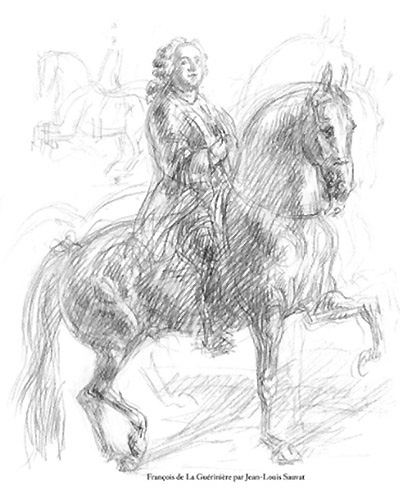
Missed the first part? Here it is – Part One
This month we will look at some of the Masters of High School Equitation, including the greatest of them all, François Robichon de la Guérinière and see just how relevant the teachings of these old masters are – and look at the question, how classical are our Classical Principles?
Once again, I suspect that those who shout loudest that they ride according to the immutable principles of the great masters of history – the Duke of Newcastle, de la Guérinière et al – are those who have never studied the actual works of the old masters.
When I look at the illustrations in Newcastle’s A General System of Horsemanship I am immediately reminded of the training methods and work of an old Californian reined cow horse trainer, Greg Lougher, who came to Australia with 35 horses in the 1950s. Even the equipment used is hugely similar. The Californians would start with a hackamore, or bitless halter, later introducing the fearsome Spade Bit – exactly the same as the one used by the Duke, but letting it sit in the mouth in a transition period, while still working primarily on the direct rein pull of the hackamore.
The Californian Reinsman would also use the fence of the arena, turning the horse towards the wall, to get it on its hocks and into a state of self-balance. This was one of Newcastle’s favourite exercises. The end result in both cases, was a horse that kept its frame even on a loose rein, ready to stop, go back, or turn.
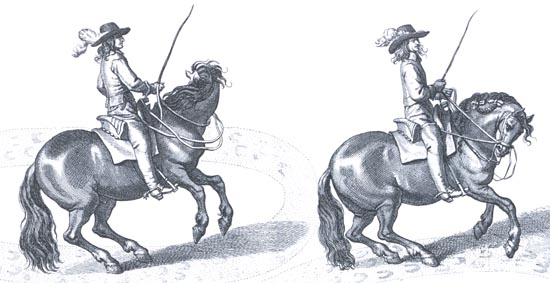
I was lucky enough to ride the last spade bit horse Greg Lougher made in Australia before his return to the United States. It was quite an extraordinary experience, all you felt in your hand was the weight of the elaborately braided reins. Think stop and the horse stopped, lay a rein on the outside of its neck and it started to spin, think back, and back you went. It was obviously a highly developed and – in the hands of a true horseman – elegant form of horsemanship, but nothing to do with today’s dressage.
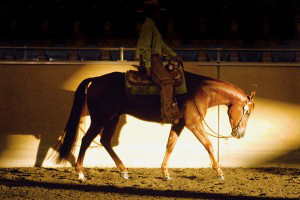
Sadly, it would seem that the style of the old Californian Bridled horse, has been totally super-ceded by a very bizarre western competition horse version of long and low…
Perhaps we should look at this development of American Western riding for a brief moment to clarify the main theme of the essence of the classical tradition.
At times you will hear commentators remark, reining is only dressage in a western saddle. Wrong.
One marked difference is that the moves in the reining tests, the spins, sliding stops and rollbacks are the same for a three-year-old horse as the six-year-old – the only concession being that the younger horse is ridden in a snaffle while the older is ridden in a curb bit.
There is no sense in which the younger horses perform simpler exercises that form the building blocks of the higher movements. Nor in Reining is there any sense that the required movements are valued precisely because of their ability to increase the gymnastic ability of the horse as is the case in the dressage tradition. Not surprisingly, many reining horses are literally burnt out by the time they are four or five because of the demands made on them mentally and physically. It’s a great system for the breeders who keep turning out new prospects for the big three-year-old – and even two-year-old – futurities…
The Western Pleasure class is another good example of what happens when the movements are separated from the horse’s function, and put to the artificial purpose of maximum rider comfort. The Western Pleasure horse does not trot, he is required to jog, keeping the steps as short as possible, with the least moment of suspension – at times there is no moment of suspension at all. Very comfortable for the rider – not such a worthwhile gymnastic for the horse, indeed moving this way, actually makes the horse less gymnastic.
It is the same in the canter – or more correctly, the lope. Here four-beat canters are common – and why not, the four-beat canter is easy to sit on, although once again the opportunity to develop the horse’s muscle structure is lost.
This I suggest is a crucial difference between other systematic training methods and dressage – and it is the awareness of the physical developmental needs of the horse that defines the classical tradition.
Story continues below the advertisement
Breeding a dressage horse this season? Go to www.ihb.com.au and select the right stallion for your mare from the range of great bloodlines. Stallions like:
Fürst Toto
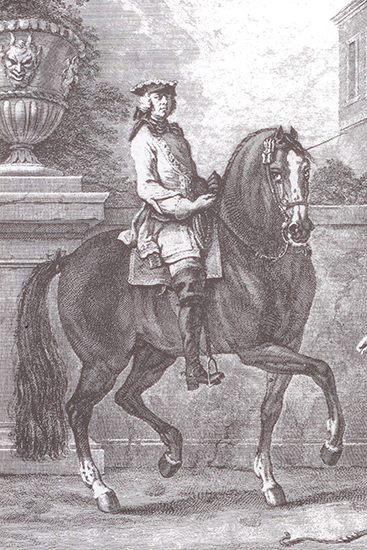
Certainly by the time we come to de la Guérinière’s Ecole de Cavalerie (published in 1731) we find this crucial awareness of the developmental nature of classical riding. Here is the great master warning against pushing the horse too fast…
According to de la Guérinière:
“One often demands things that the horses are not capable of doing in a desire to push them too fast and teach them too much. These excessive demands make them hate exercise, strains and tires their sinews and tendons, upon whose elasticity suppleness depends and often these horses end up ruined when it is believed that they have been trained. Thus, no longer having the strength to fight back, they obey, but without grace or any spirit. There is still another reason that contributes to the formation of these faults: the horses are ridden at too early an age, and because the work demanded of them exceeds their strength and they are not developed enough to resist the degree of control they are subjected to before being trained, their loins are strained, their hocks are weakened, and they are permanently damaged. The proper age for training a horse is six, seven or eight, according to his native environment.”
Work on the ground was valued. Thus back in 1731, de la Guérinière recorded:
“There used to be persons in charge of exercising the foals outside the breeding barn when they were still wild. They were called Cavalcdours de Bardelle. Those with the most patience, skill, energy and diligence were chosen; the perfection of these qualities was not as necessary for horses who were already being ridden. These people would accustom the young horses to allow someone to approach them in the stable, to pick up all four feet, to touch them, and to put on the bridle, saddle, crupper, girth, etc. They gave them assurance and made them gentle when mounted. They were never harsh or forceful, because at these times they would only use the most gentle methods that came to mind. Through this ingenious patience, they made a horse familiar with and a friend of man, maintained his vigour and courage, and made him understand and obey the first rules. If one were to imitate today the plan of these old connoisseurs, one would see fewer horses who are injured, ruined, one-sided, stiff and vicious.”
Certainly de la Guérinière was well aware of one of the pillars of the modern training principles – contact:
“Contact (apui) is the feel produced by the action of the bridle in the rider’s hand and, reciprocally, the action the rider’s hand produces on the bars of the horse’s mouth. There are horses with no contact, others with too much, and others who are fully on the bit. Those who have no contact fear the bit and cannot suffer its contact on their bars, which makes them fight the hand and toss their heads. The horses with too much contact lean heavily on the hand. The horses with the best mouths have a contact on the bit; without leaning on or fighting the hand, they have a consistent, light, and moderate contact. These three qualities of a good mouth in a horses correspond to those of a rider’s hand, which must be light, gentle and consistent.”
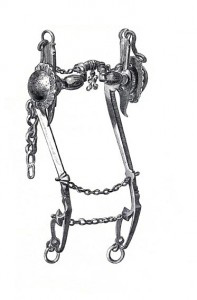
And indeed, collection:
“To put a horse together (rassembler) is to shorten his gait or air in order to put him on his haunches. It is done by holding the forehand gently with the bridle hand and driving the haunches underneath the horse with the calves. It prepares the horse to be put between the hand and the legs.”
Reading this you are probably nodding your head in agreement – how true, how like today, until you take a look at the bit!
The actual amount of contact likely to occur when mediated by a curb bit like this is perhaps very different from what we today might consider ‘contact’.
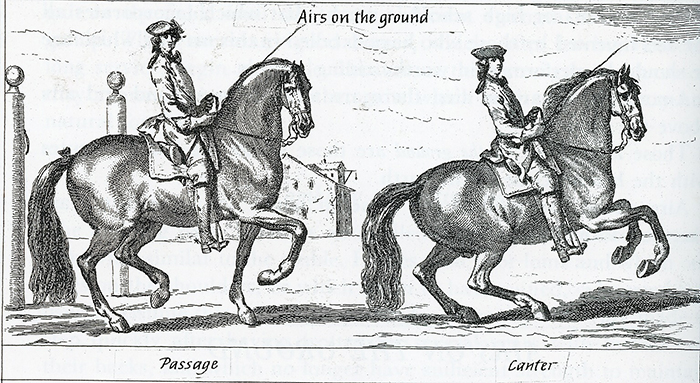
De la Guérinière then proceeds to outline the sophisticated series of movements he rode: the Volte, The Passade, The Pirouette, The Terre à Terre.
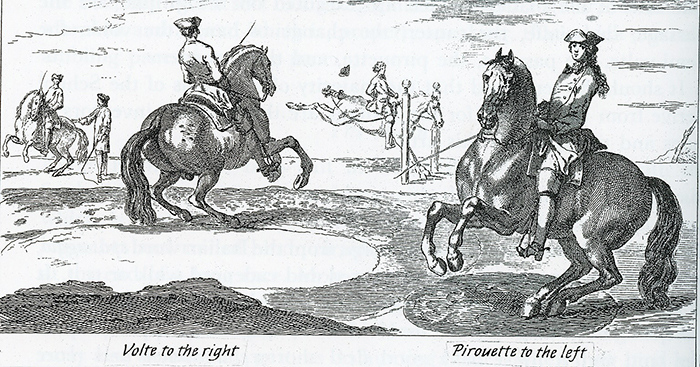
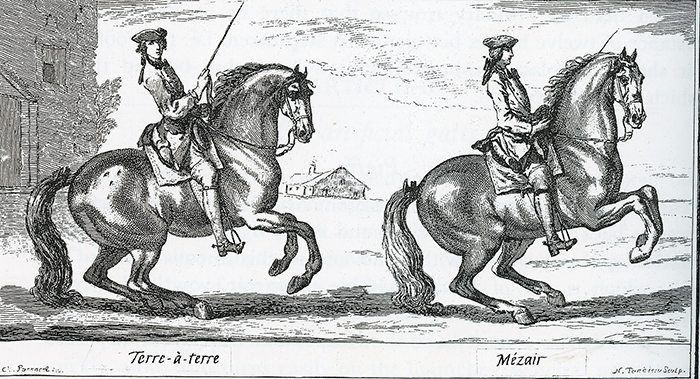
And then the various airs above the ground.
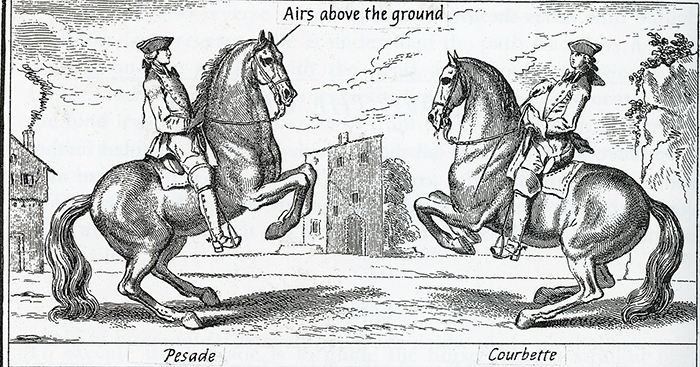
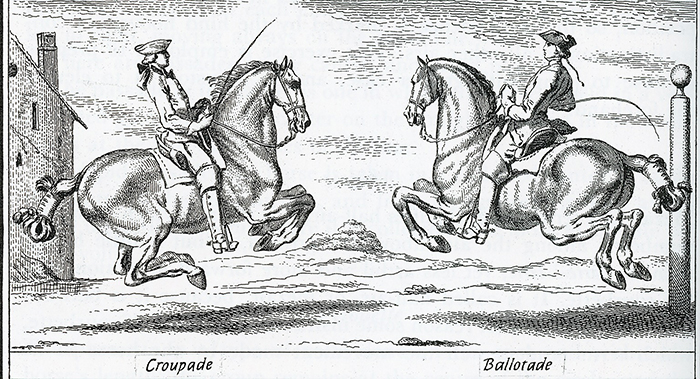
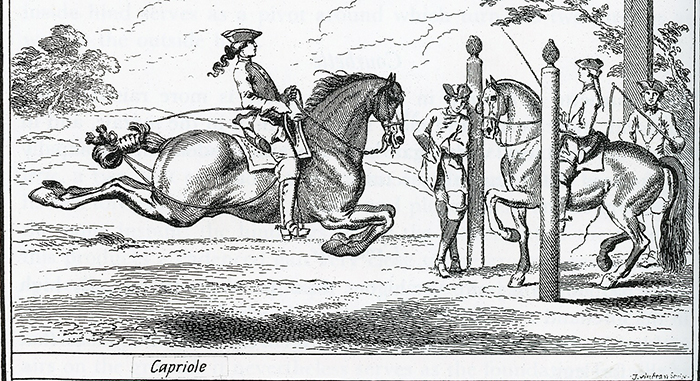
It would seem also that this eighteenth century maestro at least had some idea of that troubling first principle of the modern training scale, variously known as ‘relaxation’, or ‘submission’ or ‘losgelassenheit’. De la Guérinière seems to have a good handle on it, pointing to an earlier French master, de la Broue:
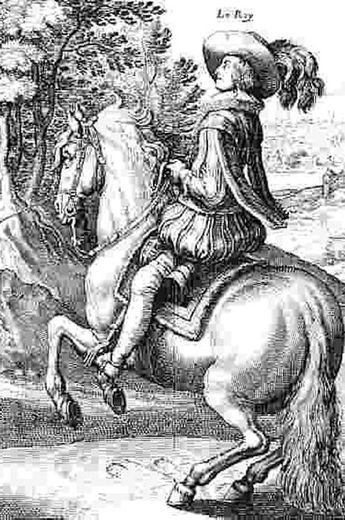
“De la Broue could not give a more exact description of a well-dressed horse than by saying that he is the one who shows suppleness, obedience and accuracy; the reason being that, if a horse’s body is not completely free and supple, he will not be able to respond to man’s demands with ease and with grace. Suppleness will always result in docility, because the horse will thus not have any problem in performing what is demanded of him.”
To achieve a ‘well-dressed’ horse required the ‘three essential qualities which comprise what is known as a well-adjusted horse.’
The first – suppleness – could only be developed in trot, because to achieve the first quality he must ‘vigorously work all the parts of his body’.
“It is through the trot, the most natural of all the gaits, that the horse is made light to the hand, without having his mouth spoiled, and stretches his limbs without risk of injury.”
The next quality is obedience, and this first involves getting the weight of the horse onto his hindquarters. To counter-act the natural tendency of the horse to fall on his forehand, de la Guérinière has the rider perfect the halt; the half-halt and the rein back. De la Guérinière notes that many horses will find the halt too physically demanding but the half halt is appropriate to all: “This action does not make the horse as anxious and stabilizes his head and haunches with less constraint than does the halt; it is for this reason that the half-halt is more useful in making the horse’s mouth and achieving lightness.”
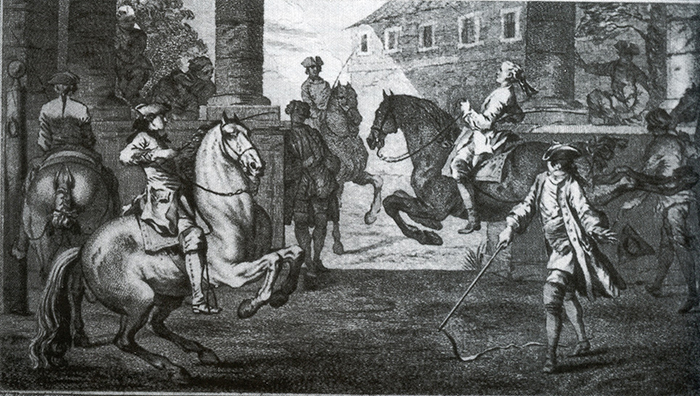
Again rein back is to be used sparingly and indeed when the horse has mastered the rein back ‘the best lesson that one can give to make him light in the hand is to only rein back the shoulders, in other words, to gently bring the forehand back to oneself as if one wanted to back him, and when one feels that the horse will back, one must give him the reins and walk forward one or two steps.’
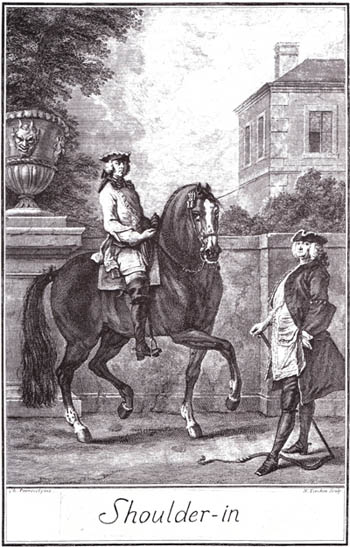
Now we move on to the most important of de la Guérinière’s discoveries: the Shoulder-In, and its close cousin, Haunches out, or The Croup to the Wall. Once again, the aim was to develop the first two qualities of a dressage horse – suppleness and obedience. He then goes on to discuss the various airs above the ground, use of the pillars, etc, none of which is of great relevance to us today.
Story continues below the advertisement
What I hope is apparent by now, is that while de la Guérinière had developed an extremely sophisticated system of training focussed on the collected movements, there are various elements, or principles, that are lacking in his school, if you want to produce a horse capable of successfully completing a modern dressage test – the elements are primarily in the area of forwardness and straightness, in the adjustability of the frame.
In all the engravings of the period we see a horse in a frame, the outline of his neck and head never varies, even on the very loose rein, the horse stays in that very collected outline.
Ask a child to draw a horse, and you will very likely receive a drawing of a horse in extended trot – it seems a very simple movement to illustrate. Think of all those engravings of the old masters, can you think of an extended trot? No, because they didn’t use that movement in their school work – it is only in his discussion of the war horse and the hunter that de la Géurinière talks a little about the need to move forward.
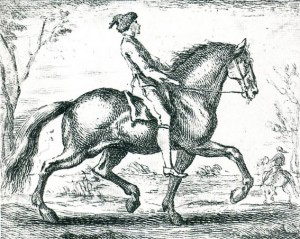
This was de la Guérinière’s idea of an extended trot
It is a relief that de la Géurinière, puts to rest that most present of equestrian myths, that the movements of dressage were designed for the battle field.
Stop and think about it for a moment. To even ride a Novice test seems to require total silence and absence of distraction – imagine your chances of collecting the horse and aiming a capriole at one of the enemy as cannons fire, swords clash and the battle rages.
De la Geurinière himself concedes: “If the airs above the ground offer no advantage for war, they offer at least that of imparting to the horse the agility it requires to clear hedges and ditches, which contributes to the safety of the rider.”
POSTSCRIPT – La Guérinière and The Shoulder In
Guérinière’s invention of what Nuno Oliveira called ‘the asprin’ of equitation, is so important, that we have pleasure in re-printing this essay by our old friend, Henri van Schaik…
The controversies around shoulder-in will very likely never end. Therefore, I think it might be a good idea to go back to the source and find out what de la Guérinière really said.
In 1731, François Robichon de la Guérinière published a book called Ecole de Cavalerie. This authoritative work is considered to be the standard of Classical Equitation. Unfortunately, a genius on horseback is not necessarily a master of language. In his use of language, de la Guérinière was not very disciplined and this provoked misconceptions and caused Parocel, his illustrator, to draw the wrong diagrams.
To understand the aim of de la Guérinière when he conceived the idea of shoulder-in, one should read very carefully what he said in explaining how the concept of this movement developed. In the beginning of the chapter he states that trotting on the straight line results in only limited suppleness, as it helps the forward movement of the shoulders and the legs. The difficulty starts he says, when we try to supple the horse so that he can make circles and sideways (lateral) movements.
Salomon de la Broue, a contemporary of de Pluvinel, and the Duke of Newcastle both had theories on how to achieve this suppleness, de la Broue making some use of circles and also of what we now call cavalletti.
As we shall see shortly, the Duke of Newcastle was a great influence on de la Gueriniere but, surprisingly perhaps, de Pluvinel was not. One may wonder why in Ecole de Cavalerie there is no reference to de Pluvinel. It seems that la Gueriniere did not think too much of de Pluvinel. He mentions him once, in the opening paragraph of the chapter on the pillars: “The pillars are an invention of M. de Pluvinel, who had the honor of putting Louis XIII on horseback . He has left us a treatise on riding. The prints it contains are valued by the curious because of the quality of the engraving and by the fact that they show how the gentlemen of the court of Louis XIII were dressed.”
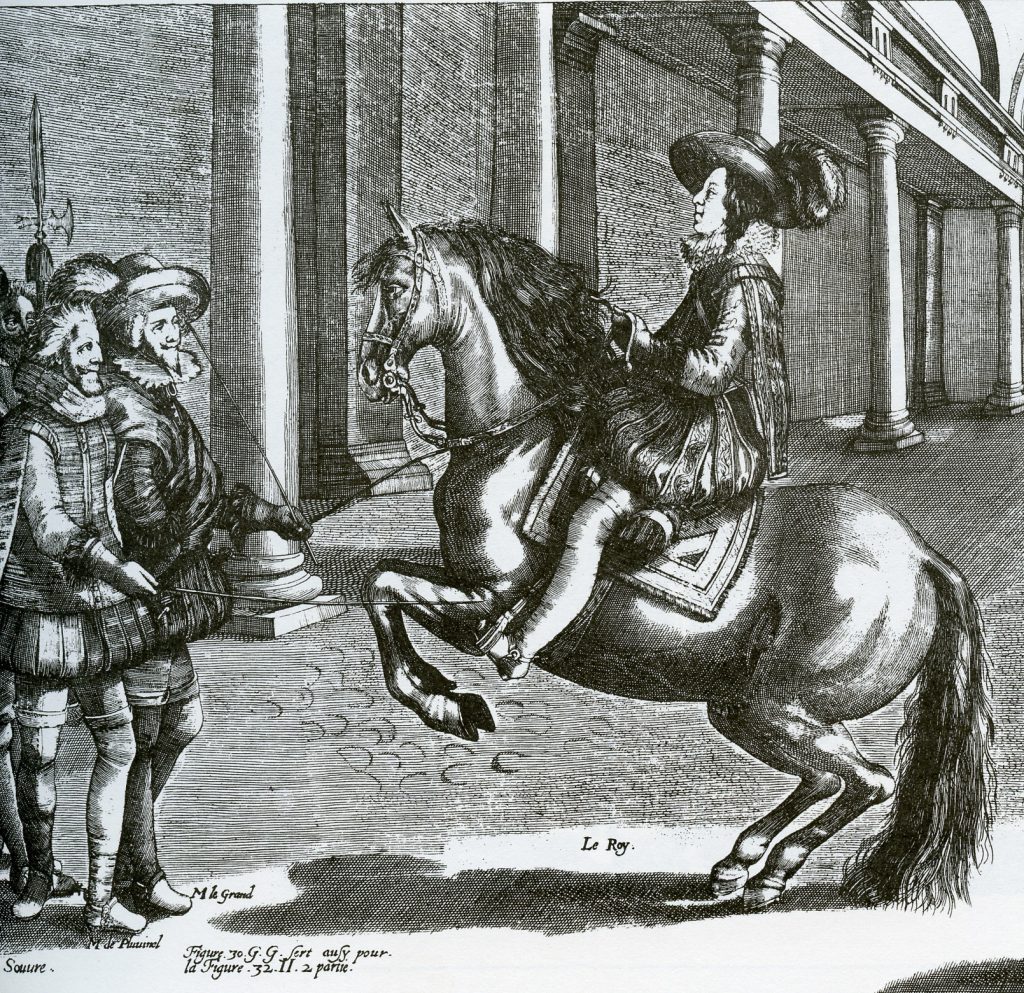
Pluvinel – a ‘fashion guide’?
The Duke of Newcastle’s theories were to greatly influence la Guérinière when he developed the shoulder-in movement. This can be seen in Ecole de Cavalerie, where de la Guérinière frequently quotes the Duke of Newcastle and then adds his own comments.
Several examples are included here.
“The head-in, the haunches out, on the circle, brings the horse on the forehand … The shoulder cannot become supple if the inner hindleg does not come close to and in front of the outer hindleg.”
Following these quotations la Guérinière says: “This admission, which experience confirms, makes it very clear that the circle is not the true means to supple the shoulder … a profound truth that this illustrious author admits is that the shoulders can only be suppled when the inner hindleg comes close to and in front of the outer hindleg; it is this judicious remark that has put me on the way to find the exercise shoulder-in.”
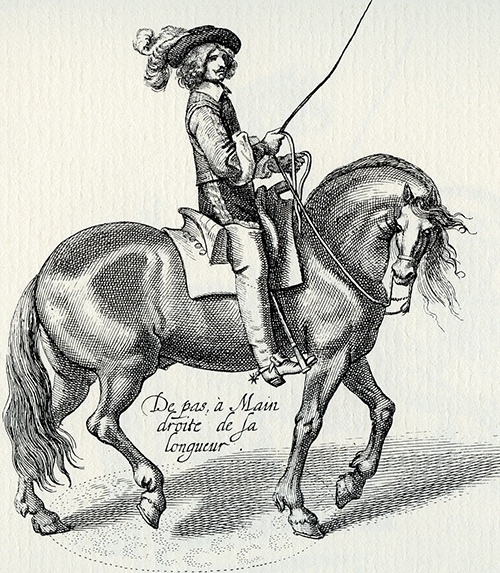
The Duke – hind leg under
Now follow two quotations from de la Gueriniere himself about the advantages of shoulder-in (bracketed words I have added to aid comprehension). “This exercise supples the shoulders because the inner foreleg moving forward, crossing over the outer foreleg, and the inner (hind) foot moving in front of the outer (hind) foot, coming down in the line of that foot, causes the shoulder to make a movement that activates the joints of this part of the horse’s anatomy.”
Later he adds: “Shoulder-in prepares the horse to bring more weight on the haunches, because during every stride he makes in this position he brings the inner hindleg forward under the mass and puts it in front of the outside hindleg, which he cannot do without dropping theinside hip … thus he learns to flex his hocks.”
A little further on one reads: “The line of the haunches close to the wall, the shoulders about one and a half to two feet from the wall.”
By contradicting himself repeatedly in Ecole de Cavalerie, de la Guérinière has created confusion about the movements of the legs and about the question of how much the shoulders should go off the tracks.
In the edition published in 1751, on page 107, he first quotes the Duke of Newcastle, when he says that the shoulder cannot be outer hindleg; then Gueriniere says that the inner front leg crosses and moves forward over the outer front leg (“croiser et chevaler par des sus”), and in the same way the inner hindleg over (“pardessus “) the outer hindleg. In connection with this sentence, he refers to the diagrams (showing very definitely the stepping over): then, when he enumerates the advantages of the movement shoulder-in, he states: “In the first place this lecture supplesthe shoulders, because the inner foreleg crossing and moving forward over (‘par dessus’) the outside foreleg and the inner hindleg moving in front of (‘au dessus’) the outside hindleg and on the line of that same foot; the movement the shoulders have to make, activates the movement of the joints.
In the second place: ‘Shoulder-in prepares a horse to put more weight on the hindquarters because during every stride he brings the inner hindleg under his belly and puts that leg in front (“au dessus”) of the outer hindleg, which causes a flexion of the inner hock.'”
One gets this picture: the haunches go straight along the wall, with the inner hindfoot in front of the outer. The inner hind foot should not cross over the outer, because this causes the haunches to swing out, becoming leg-yielding. The shoulders are brought in, not the head, because, as the Duke of Newcastle had to admit, this brings the horse on the forehand. The inner foreleg crosses the outer foreleg, the rider sees the shimmer of the horse’s eye (flexion), the horse is bent around the inside leg of the rider, and the horse is not looking in the direction he is going. The hindquarters propel because they move straight.
Of course, one can only begin to ask the horse for shoulder-in after he has become obedient to the leg, and one should realise that one can only gradually get the horse to correctly execute shoulder-in.
The Germans speak first of shoulder-fore, with which they begin the schooling. In it, the print of the inner hindfoot is between the prints ofboth front feet. As the horse becomes more supple, the shoulders will be able to come more in, because the horse will be able to bend and the print of the inner hindfoot will cover the print of the outside front foot.
Before asking for shoulder-in, the rider should prepare his horse by putting him in position, seeing the shimmer of the inside eye by giving gentle indications with the inside rein; the inside leg should be closed, just behind the girth. (If the leg is too far back, the horse cannot bend around the leg.) The outside leg is passive but ready to prevent the haunches from swinging out (causing leg-yielding).
The outside rein, held in a hand a little higher than the inside pushes the shoulders gently to the inside of the track. The hand should never go over the neck. In case the horse brings the shoulders too far in, then the inside hand pushes them back.
When de la Guérinière was trying to find a way to loosen the shoulders and hit on the concept of shoulder-in, he got as a bonus something he was not looking for, the flexion of the hocks. Thus shoulder-in not only became a loosening exercise, but also a collecting exercise. Shoulder-in is the pre-eminent exercise to get the horse to flex the hocks, without which no real collection is possible.
It is, of course, questionable if shoulder-in and for that matter leg-yielding are really movements for a test. As late as I97I the rule book of the F.E.I., Article 4II, 5a said: “The shoulder-in is a movement (usually) not required in competition or exhibitions but a schooling exercise, developing the obedience of the horse and the skill of the rider, at the same time being the foundation of lateral movements.”
It is only in the rule book of I975 that both leg yielding and shoulder-in were promoted to test movements.
To conclude, it is my conviction that we find the correct description of the shoulder-in by analysing the genesis of this movement, as de la Guérinière describes it and by attaching considerable importance to his statement about why he considers shoulder-in so important. Evidently Gustave le Bon, the French psychologist, in the fourth edition of his book L’Equitation Actuelle et ses Principes (1913), was also struck by the contradictions. He marked: “The fact that the riding masters find difficulties to formulate their methods and contradict themselves can often be explained by the fact that when they ride they use unconsciously their nervous system and when they write they consciously use their nervous system.”
The Classical Tradition – Part 3 – The Masters of the Nineteenth Century
The Classical Tradition, the Training Scale and Dressage Today



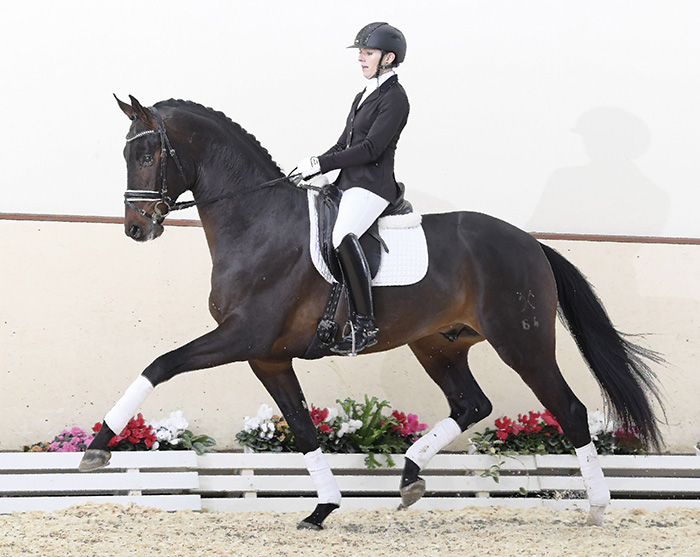
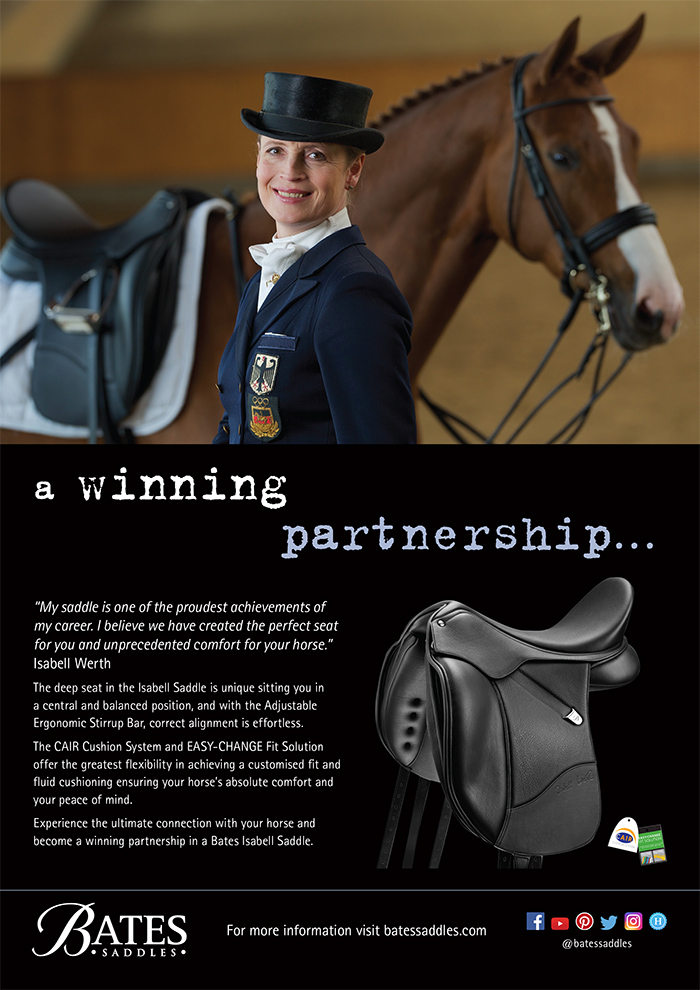

An excellent article.Probably one of the best articles I have read for a long time in regard to modern western events. After returning to Quarter Horses after a 30 year break I got a surprise to watch a pleasure class at a local show and for a moment it looked like they were all trying to plough the arena with their noses. Where did this come from?
Events have little realism when it comes to an actual working cowhorse, I have very little use for 360 degree spins ,90 and 180 degree spins are used all the time. A sliding stop is great in a sand filled area but useless out of it. Working cow horse and cutting events are thankfully true to type but one rarely sees a cowhorse rider use reins and romal in Australia any more. It was quite popular back in the 70’s.
I was planning to get back into cutting but became interested in the spade bit and vaquero training techniques and with plenty of time available have chosen this path and find it extremely satisfying. Whilst it is long road to hoe I am reminded of a quote I saw in “Eclectic Horseman “Magazine. “There are no shortcuts to any place worth going”
Regards Russ
bonjour je suis cavalier amateur est il possible de suivre des cours avec jan bemelmanns Cordialement
This is not limited to reining only
“There is no sense in which the younger horses perform simpler exercises that form the building blocks of the higher movements. Nor in Reining is there any sense that the required movements are valued precisely because of their ability to increase the gymnastic ability of the horse as is the case in the dressage tradition. Not surprisingly, many reining horses are literally burnt out by the time they are four or five because of the demands made on them mentally and physically. It’s a great system for the breeders who keep turning out new prospects for the big three-year-old – and even two-year-old – futurities…”
Unfortunately this assessment is very descriptive of current competitive dressage scene, including top international level .
Young horses presented in GP outline and carriage and the WINE of today is more coveted than the welfare of the horse .